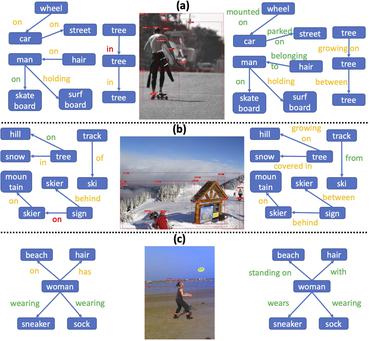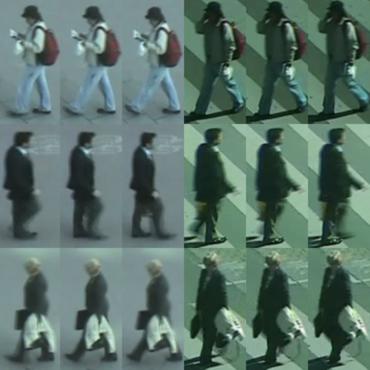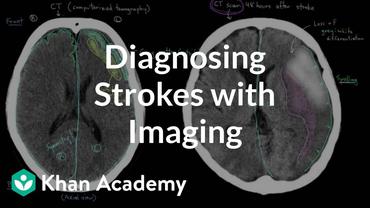Search Results for author: Chen Shen
Found 42 papers, 4 papers with code
Data-driven Coordinated AC/DC Control Strategy for Frequency Safety
no code implementations • 21 May 2024 • Qianni Cao, Chen Shen
CEFC coordinates both the initiation and control amount of emergency DC power support (EDCPS) and traditional load shedding.
Dynamic Modeling and Stability Analysis for Repeated LVRT Process of Wind Turbine Based on Switched System Theory
no code implementations • 1 Apr 2024 • Qiping Lai, Chen Shen, Dongsheng Li
A new type of voltage oscillation phenomenon induced by repeated low voltage ride-through (LVRT) of the wind turbine has been observed, threatening the safe and stable operation of such power systems.
LDTR: Transformer-based Lane Detection with Anchor-chain Representation
no code implementations • 21 Mar 2024 • Zhongyu Yang, Chen Shen, Wei Shao, Tengfei Xing, Runbo Hu, Pengfei Xu, Hua Chai, Ruini Xue
Despite recent advances in lane detection methods, scenarios with limited- or no-visual-clue of lanes due to factors such as lighting conditions and occlusion remain challenging and crucial for automated driving.
Multi-Agent, Human-Agent and Beyond: A Survey on Cooperation in Social Dilemmas
no code implementations • 27 Feb 2024 • Hao Guo, Chunjiang Mu, Yang Chen, Chen Shen, Shuyue Hu, Zhen Wang
Third, we review the emergent field of leveraging AI agents to enhance cooperation among humans.
Mixed strategy approach destabilizes cooperation in finite populations with clustering coefficient
no code implementations • 23 Feb 2024 • Zehua Si, Zhixue He, Chen Shen, Jun Tanimoto
Our research goes beyond existing studies by revealing that the differences in cooperation levels between these strategic approaches are not confined to finite populations; they also depend on the clustering coefficients of these populations.
Concise and Organized Perception Facilitates Large Language Models for Deductive Reasoning
no code implementations • 5 Oct 2023 • Shaotian Yan, Chen Shen, Junjie Liu, Jieping Ye
By perceiving concise and organized proofs, the deductive reasoning abilities of LLMs can be better elicited, and the risk of acquiring errors caused by excessive reasoning stages is mitigated.
Forensic Histopathological Recognition via a Context-Aware MIL Network Powered by Self-Supervised Contrastive Learning
no code implementations • 27 Aug 2023 • Chen Shen, Jun Zhang, Xinggong Liang, Zeyi Hao, Kehan Li, Fan Wang, Zhenyuan Wang, Chunfeng Lian
Forensic pathology is critical in analyzing death manner and time from the microscopic aspect to assist in the establishment of reliable factual bases for criminal investigation.
ConDistFL: Conditional Distillation for Federated Learning from Partially Annotated Data
1 code implementation • 8 Aug 2023 • Pochuan Wang, Chen Shen, Weichung Wang, Masahiro Oda, Chiou-Shann Fuh, Kensaku MORI, Holger R. Roth
Federated learning (FL) is a key technology enabling the collaborative development of a model without exchanging training data.
A Dynamic Equivalent Method for PMSG Based Wind Farms Under Asymmetrical Faults
no code implementations • 7 Jul 2023 • Dongsheng Li, Chen Shen
In this paper, a three-machine equivalent method applicable to asymmetrical faults is proposed considering the operating wind speed and fault severity.
A Data-driven Under Frequency Load Shedding Scheme in Power Systems
no code implementations • 3 Jul 2023 • Qianni Cao, Chen Shen
Under frequency load shedding (UFLS) constitutes the very last resort for preventing total blackouts and cascading events.
Self-Learning Symmetric Multi-view Probabilistic Clustering
no code implementations • 12 May 2023 • Junjie Liu, Junlong Liu, Rongxin Jiang, Yaowu Chen, Chen Shen, Jieping Ye
Then, SLS-MPC proposes a novel self-learning probability function without any prior knowledge and hyper-parameters to learn each view's individual distribution.
CANet: Curved Guide Line Network with Adaptive Decoder for Lane Detection
no code implementations • 23 Apr 2023 • Zhongyu Yang, Chen Shen, Wei Shao, Tengfei Xing, Runbo Hu, Pengfei Xu, Hua Chai, Ruini Xue
A lane instance is first responded by the heat-map on the U-shaped curved guide line at global semantic level, thus the corresponding features of each lane are aggregated at the response point.
 Ranked #1 on
Lane Detection
on CurveLanes
(Recall metric)
Ranked #1 on
Lane Detection
on CurveLanes
(Recall metric)
On Fast-Converged Deep Reinforcement Learning for Optimal Dispatch of Large-Scale Power Systems under Transient Security Constraints
1 code implementation • 17 Apr 2023 • Tannan Xiao, Ying Chen, Han Diao, Shaowei Huang, Chen Shen
The effectiveness, efficiency, and accuracy of the proposed method are demonstrated through experiments in the IEEE 39-bus system and a practical 710-bus regional power grid.
Locating the Sources of Sub-synchronous Oscillations Induced by the Control of Voltage Source Converters Based on Energy Structure and Nonlinearity Detection
no code implementations • 11 Feb 2023 • Zetian Zheng, Shaowei Huang, Jun Yan, Qiangsheng Bu, Chen Shen, Mingzhong Zheng, Ye Liu
The oscillation phenomena associated with the control of voltage source converters (VSCs) are widely concerning, and locating the source of these oscillations is crucial to suppressing them; therefore, this paper presents a locating scheme, based on the energy structure and nonlinearity detection.
Exit options sustain altruistic punishment and decrease the second-order free-riders, but it is not a panacea
no code implementations • 12 Jan 2023 • Chen Shen, Zhao Song, Lei Shi, Jun Tanimoto, Zhen Wang
Altruistic punishment, where individuals incur personal costs to punish others who have harmed third parties, presents an evolutionary conundrum as it undermines individual fitness.
Equivalent Inertia Provided by Droop Control of Fast Frequency Regulation Resources
no code implementations • 1 Dec 2022 • Ye Liu, Chen Shen
First, an equivalent-scenario-based method is proposed to evaluate the equivalent inertia provided by the droop control, which shows that the droop control with a constant droop coefficient provides time-variant equivalent inertia.
A Dynamic Equivalent Method for PMSG-WTG Based Wind Farms Considering wind Speeds and Fault Severities
no code implementations • 23 Nov 2022 • Dongsheng Li, Chen Shen, Ye Liu, Ying Chen, Shaowei Huang
In order to reduce the complexity of simulation of power systems including large-scale wind farms, it is critical to develop dynamic equivalent methods for wind farms which are applicable to the expected contingency analysis.
The Design of By-product Hydrogen Supply Chain Considering Large-scale Storage and Chemical Plants: A Game Theory Perspective
no code implementations • 6 Nov 2022 • Qianni Cao, Boda Li, Mengshuo Jia, Chen Shen
Hydrogen, an essential resource in the decarbonized economy, is commonly produced as a by-product of chemical plants.
Data-driven Emergency Frequency Control for Multi-Infeed Hybrid AC-DC System
no code implementations • 6 Nov 2022 • Qianni Cao, Ye Liu, Chen Shen
This paper develops a fully data-driven linear quadratic regulator (LQR) for the HVDC to provide temporal frequency support.
Detection of Nonlinear Behavior in Voltage Source Converter Control in Wind Farms Based on Higher-Order Spectral Analysis
no code implementations • 17 Oct 2022 • Zetian Zheng, Chen Shen
This paper focuses on the voltage source converter (VSC) control systems in wind farms and tries to detect the nonlinear behavior caused by the bilateral or unilateral saturation hard limits based on HOS analysis.
Distributed Emergency Frequency Control Considering Transient Stability Constraints in Multi-Infeed Hybrid AC-DC System
no code implementations • 14 Oct 2022 • Ye Liu, Chen Shen, Zhaojian Wang
Both of these two control laws can guarantee transient stability constraints, restore system frequency and achieve the defined optimal control objective.
On Mitigating Hard Clusters for Face Clustering
1 code implementation • 25 Jul 2022 • Yingjie Chen, Huasong Zhong, Chong Chen, Chen Shen, Jianqiang Huang, Tao Wang, Yun Liang, Qianru Sun
Face clustering is a promising way to scale up face recognition systems using large-scale unlabeled face images.
Incentive Mechanism Design for Emergency Frequency Control in Multi-Infeed Hybrid AC-DC System
no code implementations • 28 May 2022 • Ye Liu, Chen Shen, Zhaojian Wang, Feng Liu
In multi-infeed hybrid AC-DC (MIDC) systems, the emergency frequency control (EFC) with LCC-HVDC systems participating is of vital importance for system frequency stability.
Chance-constrained OPF: A Distributed Method with Confidentiality Preservation
no code implementations • 28 Feb 2022 • Mengshuo Jia, Gabriela Hug, Yifan Su, Chen Shen
Given the increased percentage of wind power in power systems, chance-constrained optimal power flow (CC-OPF) calculation, as a means to take wind power uncertainty into account with a guaranteed security level, is being promoted.
Control-aware Probabilistic Load Flow for Transmission Systems: An Analytical Method
no code implementations • 28 Feb 2022 • Mengshuo Jia, Qianni Cao, Chen Shen, Gabriela Hug
This method is based on a high-precision linear power flow model, whose precision is even further improved in this paper by an original correction approach.
The Volcspeech system for the ICASSP 2022 multi-channel multi-party meeting transcription challenge
no code implementations • 9 Feb 2022 • Chen Shen, Yi Liu, Wenzhi Fan, Bin Wang, Shixue Wen, Yao Tian, Jun Zhang, Jingsheng Yang, Zejun Ma
For Track 1, we propose several approaches to empower the clustering-based speaker diarization system to handle overlapped speech.
MPC: Multi-View Probabilistic Clustering
no code implementations • CVPR 2022 • Junjie Liu, Junlong Liu, Shaotian Yan, Rongxin Jiang, Xiang Tian, Boxuan Gu, Yaowu Chen, Chen Shen, Jianqiang Huang
Despite the promising progress having been made, the two challenges of multi-view clustering (MVC) are still waiting for better solutions: i) Most existing methods are either not qualified or require additional steps for incomplete multi-view clustering and ii) noise or outliers might significantly degrade the overall clustering performance.
Improving Pseudo-label Training For End-to-end Speech Recognition Using Gradient Mask
no code implementations • 8 Oct 2021 • Shaoshi Ling, Chen Shen, Meng Cai, Zejun Ma
In the recent trend of semi-supervised speech recognition, both self-supervised representation learning and pseudo-labeling have shown promising results.
Multi-task Federated Learning for Heterogeneous Pancreas Segmentation
no code implementations • 19 Aug 2021 • Chen Shen, Pochuan Wang, Holger R. Roth, Dong Yang, Daguang Xu, Masahiro Oda, Weichung Wang, Chiou-Shann Fuh, Po-Ting Chen, Kao-Lang Liu, Wei-Chih Liao, Kensaku MORI
Federated learning (FL) for medical image segmentation becomes more challenging in multi-task settings where clients might have different categories of labels represented in their data.
A fault detection scheme for PV panels in large scale PV stations with complex installation conditions
no code implementations • 19 May 2021 • Qianni Cao, Chen Shen, Mengshuo Jia
Then, an orientation independent vector C is developed to eliminate the probability distribution differences of power outputs caused by varying azimuth angles and tilt angles.
VideoFlow: A Framework for Building Visual Analysis Pipelines
no code implementations • 1 Jan 2021 • Yue Wu, Jianqiang Huang, Jiangjie Zhen, Guokun Wang, Chen Shen, Chang Zhou, Xian-Sheng Hua
The past years have witnessed an explosion of deep learning frameworks like PyTorch and TensorFlow since the success of deep neural networks.
PPG-based singing voice conversion with adversarial representation learning
no code implementations • 28 Oct 2020 • Zhonghao Li, Benlai Tang, Xiang Yin, Yuan Wan, Ling Xu, Chen Shen, Zejun Ma
Singing voice conversion (SVC) aims to convert the voice of one singer to that of other singers while keeping the singing content and melody.
Automated Pancreas Segmentation Using Multi-institutional Collaborative Deep Learning
no code implementations • 28 Sep 2020 • Pochuan Wang, Chen Shen, Holger R. Roth, Dong Yang, Daguang Xu, Masahiro Oda, Kazunari Misawa, Po-Ting Chen, Kao-Lang Liu, Wei-Chih Liao, Wei-Chung Wang, Kensaku MORI
The performance of deep learning-based methods strongly relies on the number of datasets used for training.
PCPL: Predicate-Correlation Perception Learning for Unbiased Scene Graph Generation
1 code implementation • 2 Sep 2020 • Shaotian Yan, Chen Shen, Zhongming Jin, Jianqiang Huang, Rongxin Jiang, Yaowu Chen, Xian-Sheng Hua
Today, scene graph generation(SGG) task is largely limited in realistic scenarios, mainly due to the extremely long-tailed bias of predicate annotation distribution.
 Ranked #4 on
Unbiased Scene Graph Generation
on Visual Genome
Ranked #4 on
Unbiased Scene Graph Generation
on Visual Genome
Cannot Predict Comment Volume of a News Article before (a few) Users Read It
no code implementations • 14 Aug 2020 • Lihong He, Chen Shen, Arjun Mukherjee, Slobodan Vucetic, Eduard Dragut
We show that the early arrival rate of comments is the best indicator of the eventual number of comments.
Scene-based Factored Attention for Image Captioning
no code implementations • 7 Aug 2019 • Chen Shen, Rongrong Ji, Fuhai Chen, Xiaoshuai Sun, Xiangming Li
Specifically, the proposed module first embeds the scene concepts into factored weights explicitly and attends the visual information extracted from the input image.
Privacy-Preserving Distributed Parameter Estimation for Probability Distribution of Wind Power Forecast Error
no code implementations • 17 Dec 2018 • Mengshuo Jia, Shaowei Huang, Zhiwen Wang, Chen Shen
Establishing the joint probability distribution of wind power and the corresponding forecast data of spatially correlated WFs is the foundation for deriving the conditional probability distribution.
A multi-scale pyramid of 3D fully convolutional networks for abdominal multi-organ segmentation
no code implementations • 6 Jun 2018 • Holger R. Roth, Chen Shen, Hirohisa ODA, Takaaki Sugino, Masahiro Oda, Yuichiro Hayashi, Kazunari Misawa, Kensaku MORI
Recent advances in deep learning, like 3D fully convolutional networks (FCNs), have improved the state-of-the-art in dense semantic segmentation of medical images.
Sharp Attention Network via Adaptive Sampling for Person Re-identification
no code implementations • 7 May 2018 • Chen Shen, Guo-Jun Qi, Rongxin Jiang, Zhongming Jin, Hongwei Yong, Yaowu Chen, Xian-Sheng Hua
In this paper, we present novel sharp attention networks by adaptively sampling feature maps from convolutional neural networks (CNNs) for person re-identification (re-ID) problem.
Deep learning and its application to medical image segmentation
no code implementations • 23 Mar 2018 • Holger R. Roth, Chen Shen, Hirohisa ODA, Masahiro Oda, Yuichiro Hayashi, Kazunari Misawa, Kensaku MORI
However, recent advances in deep learning have made it possible to significantly improve the performance of image recognition and semantic segmentation methods in the field of computer vision.
On the influence of Dice loss function in multi-class organ segmentation of abdominal CT using 3D fully convolutional networks
no code implementations • 18 Jan 2018 • Chen Shen, Holger R. Roth, Hirohisa ODA, Masahiro Oda, Yuichiro Hayashi, Kazunari Misawa, Kensaku MORI
Deep learning-based methods achieved impressive results for the segmentation of medical images.
Convolutional Neural Knowledge Graph Learning
no code implementations • 23 Oct 2017 • Feipeng Zhao, Martin Renqiang Min, Chen Shen, Amit Chakraborty
In this paper, we try to learn more complex connections between entities and relationships.









